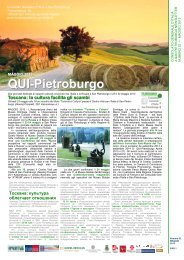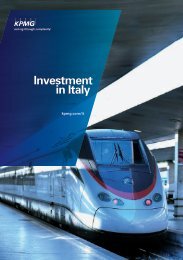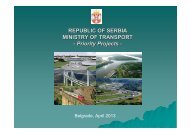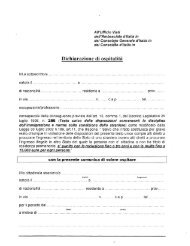Innovation Canada: A Call to Action
Innovation Canada: A Call to Action
Innovation Canada: A Call to Action
You also want an ePaper? Increase the reach of your titles
YUMPU automatically turns print PDFs into web optimized ePapers that Google loves.
Program Mix and DesignBox 6.3 Stacking of R&D SupportFirms undertaking R&D in <strong>Canada</strong> have access <strong>to</strong> a wide range of federal and provincialsupport programs, and can frequently obtain financial support for the same project frommore than one program. For example, in 2007, some 86 percent of small firms claiming theSR&ED credit made use of at least one other (federal and/or provincial) R&D supportprogram. In that year, approximately 70 percent of all small firms received financialassistance amounting <strong>to</strong> 40–50 percent of their spending on R&D and almost 10 percent ofsmall firms (about 1600) received assistance amounting <strong>to</strong> more than 50 percent of their R&Dspending.Within the federal government, the key constraint on “stacking” — that is, the use of two ormore programs <strong>to</strong> support a given initiative — is a Treasury Board requirement that fundingfrom all government sources (federal, provincial and municipal), including tax credits, cannotexceed 100 percent of the eligible costs of a project. However, lower limits are typicallyestablished for individual programs. For example, the stacking limit for IRAP projects is75 percent of eligible costs, which consist of wages, contract expenses and overhead.Programs also limit the proportional amount of funding that can be provided by theprogram itself <strong>to</strong> support any one project. In the case of IRAP, this “stand-alone” limit is also75 percent, but the base is smaller because of the exclusion of overhead expenses.It is important <strong>to</strong> bear in mind that IRAP does not au<strong>to</strong>matically provide the maximumsubsidy <strong>to</strong> firms — some firms may receive the maximum, but this would be the exception,given that the average subsidy rate is actually closer <strong>to</strong> 20 percent. a But as stated above, asubstantial number of firms are able <strong>to</strong> obtain government assistance that exceeds half oftheir spending on R&D.The Panel believes that the government should undertake a comprehensive study of theappropriate level of public support for a project, including the maximum allowable stackingrate. Over-subsidization is a potential concern because, beyond a certain point, subsidizationno longer generates a net benefit for the economy as a whole.aThis number is based on a web-based survey undertaken in May and June 2011 on behalf of the Panel.information on how firms are able <strong>to</strong> “stack”benefits from tax credits and direct assistance.It also illustrates the present limits on stacking.The research and consultation undertaken bythe Panel point <strong>to</strong> both the need andopportunity <strong>to</strong> improve several aspects of theSR&ED program in ways that would increase thenet public benefit of the program. It is likely thatfiscal savings could thus be obtained whileincreasing the net benefit that is currently beingdelivered by the program. The savings would beavailable <strong>to</strong> finance the incremental costs ofimplementing the Panel’s recommendations,which are directed primarily <strong>to</strong>ward SMEs, asoutlined in other chapters. The followingrecommendation in respect of the SR&EDprogram constitutes the Panel’s advice withregard <strong>to</strong> a more appropriate mix and design oftax incentives and direct support.6-9
















